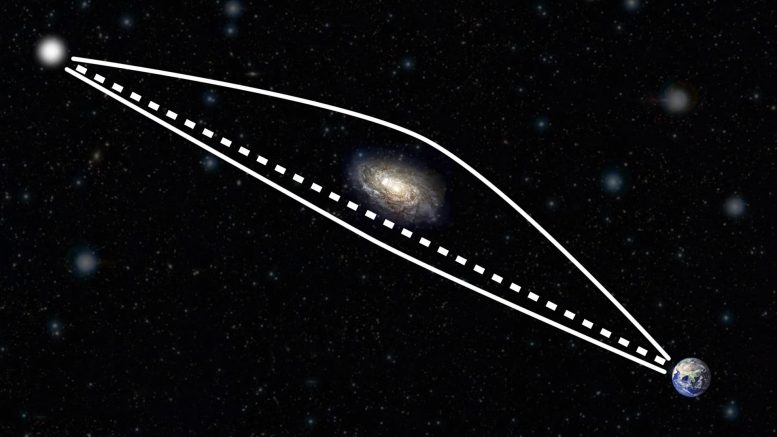
The source’s light reaches the earth through multiple paths. When the lens is off-center, one path is shorter. Variations from the source will arrive at different times, allowing one to measure the distance. Credit: Leiden University
It’s one of the big cosmology debates: the universe is expanding, but how fast exactly? Two available measurements yield different results. Leiden physicist David Harvey adapted an independent third measurement method, using the light-warping properties of galaxies predicted by Einstein. He published about it in the Monthly Notices of the Royal Astronomical Society.
We’ve known for almost a century about the expansion of the universe. Astronomers noted that the light from faraway galaxies has a lower wavelength than that of galaxies close by. The light waves seem stretched, or redshifted, which means that those far galaxies are moving away.
This expansion rate, or Hubble constant, can be measured. Certain supernovas, or exploding stars, have a well-understood brightness, this makes it possible to estimate their distance from Earth, and relate that distance to their redshift or speed. For every megaparsec of distance (a parsec is 3.3 light-years), the speed that galaxies recede from us, increases with 73 kilometers (45 miles) per second.
However, increasingly accurate measurements of the Cosmic Microwave Background, a remnant from light in the very early universe, yielded a different Hubble constant: about 67 kilometers (42 miles) per second.
Einstein
How can that be? Why the difference? Could this difference tell us anything new about the universe and physics? “This,” says Leiden physicist David Harvey, “is why a third measurement, independent from the other two, has come into view: gravitational lenses.”
Albert Einstein’s theory of General Relativity predicts that a concentration of mass, such as a galaxy, can bend the path of light, much like a lens does. When such a galaxy is in front of a bright light source, the light is bent around it. It can reach Earth via different routes, which gives us two, sometimes even four images of the same source.
HoliCOW
In 1964, the Norwegian astrophysicist Sjur Refsdal had an a-ha moment: when the lensing galaxy is a bit off-center, one route is longer than the other. That means that the light takes longer by that path. So when there is a variation of the brightness of the quasar, this blip will be visible in one image before the other. The difference could be days, or even weeks or months.
This timing difference, Refsdal showed, can also be used to pin down distances to the quasar and the lens. Comparing these with the redshift of the quasars gives you an independent measurement of the Hubble constant.
A research collaboration under the HoliCOW used six of these lenses to narrow down the Hubble constant to about 73. However, there are complications: apart from the distance difference, the mass of the foreground galaxy has a delaying effect too, depending on the exact mass distribution. “You have to model that distribution, but a lot of unknowns remain,” says Harvey. Uncertainties like this limit the accuracy of this technique.
Imaging the whole sky
This could change when a new telescope will be online in Chile in 2021, dedicated to imaging the whole sky every few nights. This Vera Rubin Observatory is expected to see thousands of double quasars, offering a chance to narrow down the Hubble constant even further.
Harvey: “The problem is: modeling all those foreground galaxies individually is impossible, computationally.” So instead, Harvey designed a method to calculate the average effect of a full distribution of up to a thousand lenses.
“In that case, individual quirks of the gravitational lenses are not that important, and you don’t have to do simulations for all the lenses. You just have to make sure that you model the entire population,” says Harvey.
“In the paper, I show that with this approach, the error in the Hubble constant thresholds at 2 percent, when you approach about thousands of quasars.”
This error margin will allow a meaningful comparison between the several Hubble constants, and could help in understanding the discrepancy. “And if you want to go below those 2 percent, you have to improve your model by doing better simulations. My guess is that this would be possible.”
Reference: “A 4 per cent measurement of H0 using the cumulative distribution of strong lensing time delays in doubly imaged quasars” by David Harvey, 20 August 2020, Monthly Notices of the Royal Astronomical Society.
DOI: 10.1093/mnras/staa2522

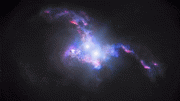
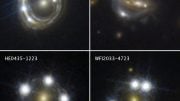
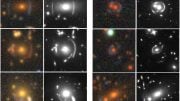
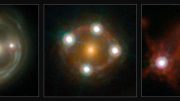
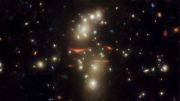
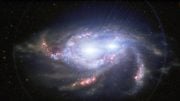
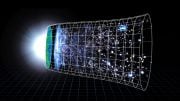
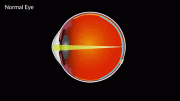
अन्तरिक्ष से आए फास्ट सिग्नल की खोज में सेटेलाइट से जुड़े हवाई जहाज में साइंटिस्ट टीम इंडिया में किसी ट्रांसमीटर के चक्कर लगाती है तो मैं उसे पूरा कर दूंगा हेल्प मी प्लीज हेल्प मी
This is promising!
A bit confusing article and video. Seems HoliCOW got H_0 = 73 km s^-1 Mpc^-1 recently [ https://hubblesit…-2020-04 ] and that is the value shown in the video. (HoliCOW has always reported low-z, high-H_0 values.)
The new paper however gets H_0 = 71 (+2 -3) km s^−1 Mpc^−1. It also uses only 27 doubly imaged quasars with lenses at low z < 0.8. It is the method that model each lens by their possible distributions.
That is close to the values you get when look at galaxies with different methods of estimating distances. Nearly 12,000 galaxies with z < 1.3 yielded consistent distances for all of them, resulting in H_0 = 70 km s^-1 Mpc^-1 ["Mean Estimate Distances for Galaxies with Multiple Estimates in NED-D", I. Steer, The Astronomical Journal, Volume 160, Number 5, October 2020].
A third recent low-z estimate (based on a unique observation thus far) based on gravitational waves gets H_0 = 69 (+16 -8) km s^-1 Mpc^-1 ["A gravitational-wave measurement of the Hubble constant following the second observing run of Advanced LIGO and Virgo”, arxiv].
Else the set of low-z observations have tended to come in at high H_0 and integrative high-z at low H_0 as described in teh article. If H_0 < 70 km s^-1 Mpc^-1 or so, the Planck collaboration claims we need no new physics and the current, simplest LCDM cosmology would remain valid.
Another low-z lens work is out, with 9+33 lenses [“TDCOSMO IV: Hierarchical time-delay cosmography – joint inference of the Hubble constant and galaxy density profiles”, S. Birrer et al., Astronomy & Astrophysics (2020)].
They get 𝐻_0 = 67.4 (+4.1 −3.2) km s^−1 Mpc^−1 , notably starting out with the HoliCOW value but converging on lower values as they add data and select best methods.